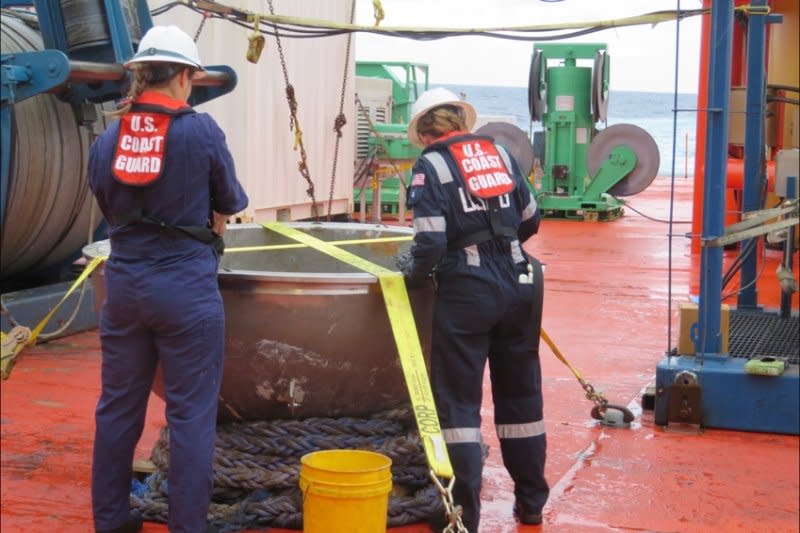Last of debris from deadly Titan implosion recovered from sea floor near Titanic

Oct. 10 (UPI) -- Salvage crews in the Atlantic have collected the last bits of debris from the ill-fated Titan submersible that imploded on a dive to the Titanic earlier this year, killing five people.
In a statement released Tuesday, U.S. Coast Guard officials said the debris will be regarded as evidence in its investigation into the tragedy.
"The salvage mission, which was conducted under an existing agreement with U.S. Navy Supervisor of Salvage & Diving, was a follow-up to initial recovery operations following the loss of the Titan submersible," Coast Guard officials said in a press release.
The Coast Guard transferred the recovered debris to an unspecified port for cataloging and analysis.
The deep sea implosion of the submersible in the Atlantic claimed the lives of five people, including Stockton Rush, the CEO of OceanGate and Titan's maker. British billionaire and adventurer Hamish Harding, French dive expert Paul-Henri Nargeolet, and prominent British businessman Shahzada Dawood and his 19-year-old son Suleman also were lost in the accident.

"Additional presumed human remains were carefully recovered from within Titan's debris and transported for analysis by U.S. medical professionals," the Coast Guard's release stated.
The Titan submersible lost contact with a surface vessel that deployed it while on a dive to view the remains of the Titanic, which sank in 1912 and claimed the lives of more than 1,500 people.
In the days and weeks afterward, it was revealed that Rush reportedly had flouted safety rules and high-pressure engineering standards when constructing the Titan, and boasted on social media of having made a submersible craft while sidestepping much of the bureaucracy and regulations that would typically be required for such expeditions.
On one video, Rush mocked the liability release form that OceanGate required its customers to sign before boarding the vessel, which Rush also bragged, was controlled by a consumer grade video game console.
In July, the company announced that it was suspending operations.
OceanGate and Rush had been under scrutiny before the deadly implosion. In 2021, Rush told vlogger Alan Estrada that he'd "broken some rules" to make trips to the Titanic possible.
"I'd like to be remembered as an innovator. I think it was General [Douglas] MacArthur who said, 'You're remembered for the rules you break,'" Rush said then. "And I've broken some rules to make this. I think I've broken them with logic and good engineering behind me."
An effort to rescue the Titan by crews from all over the world garnered international attention as experts calculated the remaining oxygen on board and speculated as to the occupants' chances of survival.
Hopes grew that rescuers would find the submersible's occupants alive when a Navy vessel heard banging sounds coming from the vicinity of the Titanic's remains.
But those hopes soon turned to horror when the Navy reported the banging sounds were consistent with the time and place where the Titan's mother ship lost contact with the submersible, and were then thought to be the sounds of the vessel imploding about 1,600 feet from the Titanic's hull.

 Yahoo News
Yahoo News 
